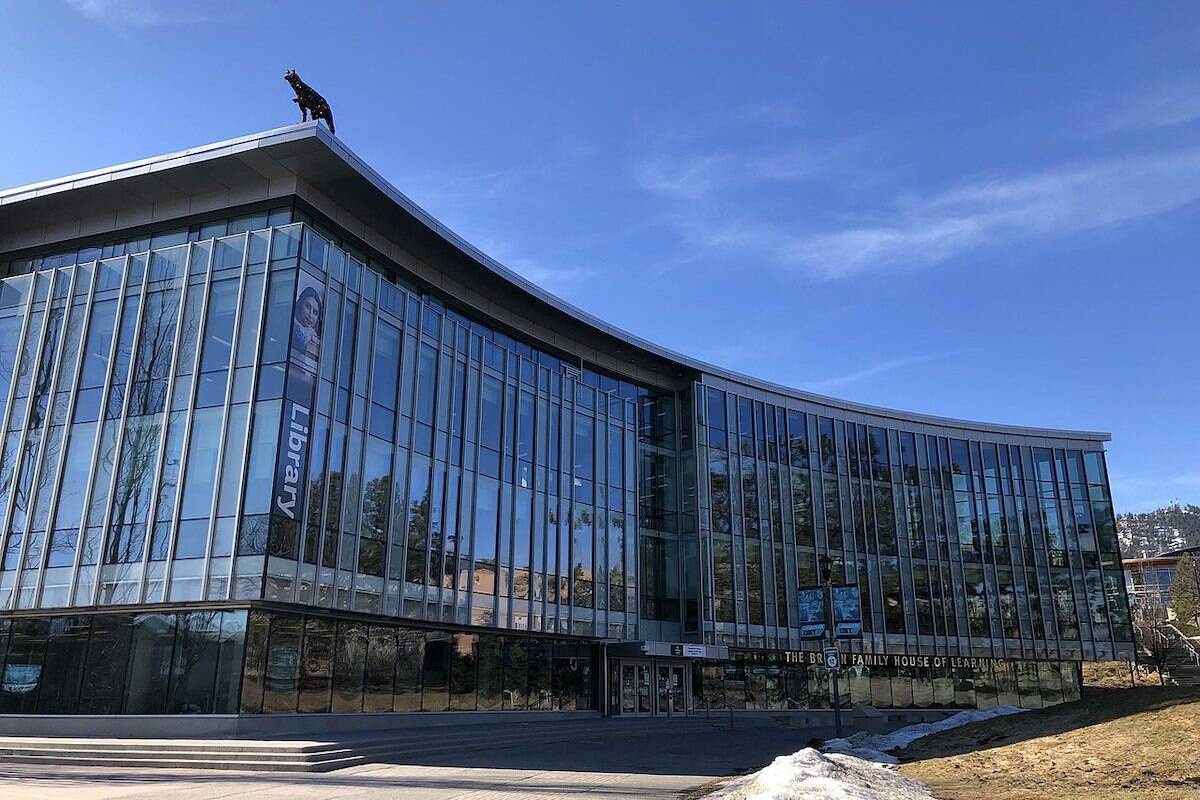Two Ukrainian university students in B.C. are creating a set of resources for other Ukrainians in Canada and abroad amid the ongoing war.
At the centre of Yana Hulak and Sofia Shmyhovska’s project is a comprehensive map of “safe spaces” for Ukrainian newcomers to Canada.
The map includes Ukrainian social services such as churches, educational centres, cultural centres and child care services, as well as Ukrainian restaurants and grocery stores that carry traditional Ukrainian foods.
In addition to showing where everything is located, the map also includes links for each resource, as well as contact information and further reading.
The students are in Canada working at Thompson Rivers University this summer through the Mitacs Globalink Research Internship. Hulak is an undergraduate student studying law and economics and Shmyhovska, who is also an undergraduate student, is studying social work.
Their work is being supervised by Oleksandr Sasha Kondrashov, an associate professor of education and social work at Thompson Rivers. Kondrashov is a Ukrainian immigrant who arrived in Canada in the early 2000s.
Hulak and Shmyhovska applied for the internship last fall and were excited by the opportunity to work on a project which would strengthen social work collaboration between Canada and Ukraine. However, what they did not expect was for their country to be invaded before they arrived in Canada.
When the students arrived in Canada in May, they were met at the airport by a crowd of people holding welcome signs and singing the Ukrainian national anthem. Their warm reception in Canada played a pivotal role in shaping the direction of their project.
“We were tired, we were hungry, we were cold, and then suddenly our whole perspective shifted. It made us realize how important it is to feel safe when you arrive in a new country for the first time,” Shmyhovska said.
With more than 1.4 million people, Canada is currently home to the world’s second-largest Ukrainian diaspora. Between March 17 and Aug. 10, the Canadian government approved more than 190,000 Ukrainian applications for temporary residence.
As more Ukrainians flee the Russian invasion and arrive in Canada, the map and resource guide created by Hulak and Shmyhovska will serve as a useful tool to connect newcomers to the strong network of Ukrainians in Canada.
“I think our project is really important and will be able to help Ukrainians settle here in Canada,” said Hulak.
While the map and guide are the main focus of the students’ project, it isn’t particularly useful for Ukrainians who have not yet arrived in Canada.
Recognizing that the language barrier could pose difficulties for newcomers to Canada, Hulak and Shmyhovska have also created virtual English lessons which can be completed before leaving Ukraine — and by any Ukrainian hoping to learn English. The lessons are currently being used by more than 130 Ukrainians around the world.
Now that the internship is complete, Shmyhovska has moved to Ireland to be with her family who fled there from Ukraine after the invasion.
Hulak has moved from Kamloops to Vancouver and will remain there indefinitely.
When she began making plans to come to Canada last fall, her plan was to complete her internship and then return home to her family in Kyiv, Ukraine’s capital city. However, the war has postponed her return.
“I’m in touch with my family but I miss them a lot,” Hulak said. “Hopefully we will be together soon.”
In the early stages of the invasion, Russia had gained significant territory around Kyiv. Ukrainian forces regained large areas around the capital in April after Russia softened its push toward the city and began focusing more heavily on Eastern Ukraine.

